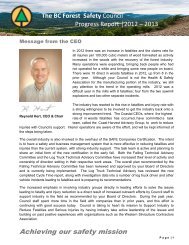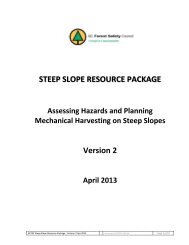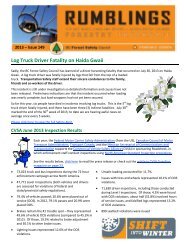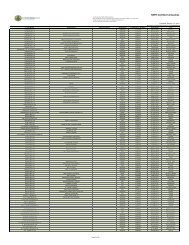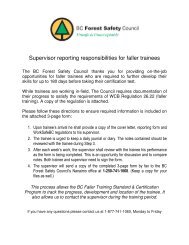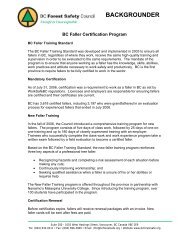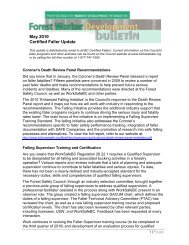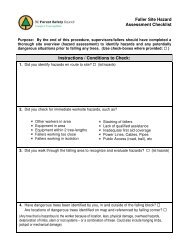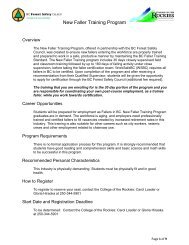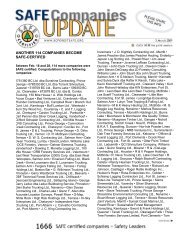Log Hauling & Lowbedding Safe Driving Practices And Operating ...
Log Hauling & Lowbedding Safe Driving Practices And Operating ...
Log Hauling & Lowbedding Safe Driving Practices And Operating ...
Create successful ePaper yourself
Turn your PDF publications into a flip-book with our unique Google optimized e-Paper software.
(Revised October 2006)<br />
SAFE DRIVING PRACTICES AND PROCEDURES<br />
As the driver of the vehicle, you MUST DRIVE SAFELY and assume responsibility for the<br />
safe operation of your vehicle and load while driving on roads under permit to Canadian<br />
Forest Products Ltd. and while driving on provincial and municipal roads. Every one’s cooperation<br />
and good judgment is required to reduce the number of incidents and accidents<br />
on our roads.<br />
The following <strong>Safe</strong> Work Procedures must be adhered to:<br />
1. Drivers of all industrial vehicles must complete and record daily pre-trip inspections.<br />
2. Seat belts MUST be worn at all times.<br />
3. No unauthorized person should be in the drivers compartment except:<br />
• In the case of an emergency, or<br />
• One authorized passenger such as a trainee or supervisor.<br />
4. All lights, MUST be turned on when the vehicle is in motion, day or night. Turn off<br />
headlights at night when parked to clear loaded traffic.<br />
5. Drivers MUST obey all road signs. Typically Canfor’s road signs are yellow<br />
background and black lettering, but some temporary signs (not in yellow) may be<br />
installed in the case of a newly identified hazard.<br />
6. The maximum speed for log haul trucks and other industrial vehicles on Canfor<br />
roads is 80 km/hr (empty), 60 km/hr (loaded) on mainline roads or as otherwise<br />
posted. Slower speeds are required on branch and spur roads based on the road<br />
design. (30 km/hr empty and 25 km/hr loaded for log hauling, lowbed and other<br />
industrial trucks.<br />
7. Drivers exceeding the posted speed, or not driving to road conditions, sometimes<br />
cause loads to become unstable. On early winter roads, when the frost heaves are<br />
common across the muskeg, drivers are recommended to slow down. Loaded<br />
aspen logs 2.7 and 5.3 m in length can work out from the bunks due to the constant<br />
twisting of the trailer across the frost heaves. Excessive speed is a factor in this<br />
problem.<br />
8. Drivers must SLOW DOWN on narrow road sections or when approaching blind<br />
corners, hills and intersections. Always slow down when approaching a bridge.<br />
Always find a pullout well in advance of clearing loaded vehicles. Trucks must stop<br />
at all public roadways.<br />
9. Drivers must recognize and slow down for changing road conditions due to changing<br />
weather. If the driver judges it unsafe to continue, then park the truck and trailer in a<br />
safe location.<br />
9



